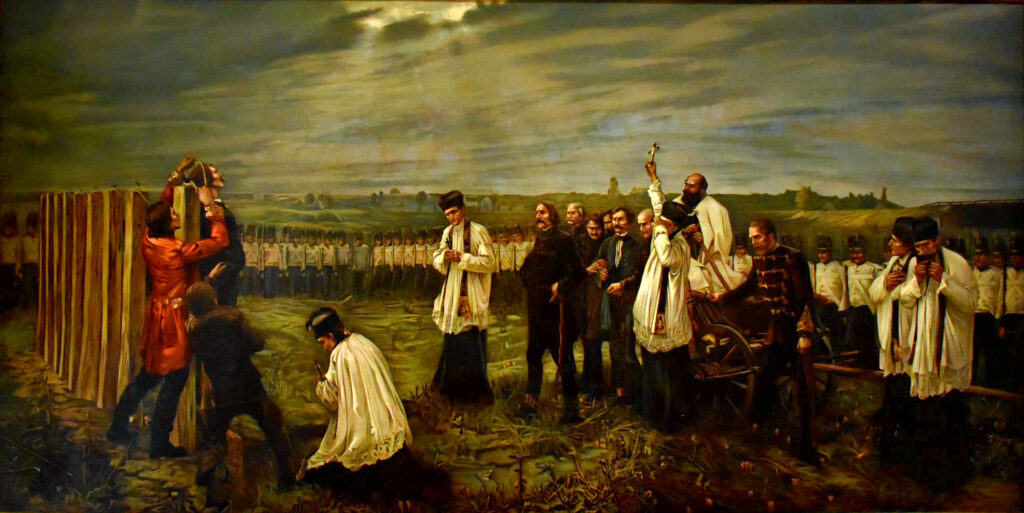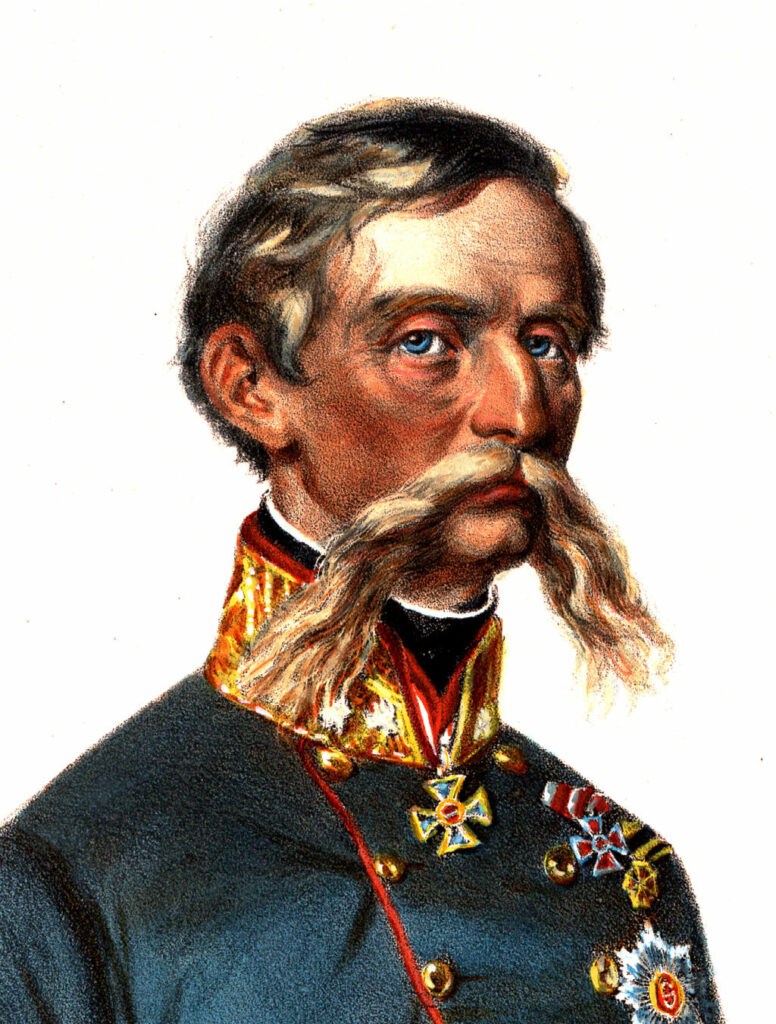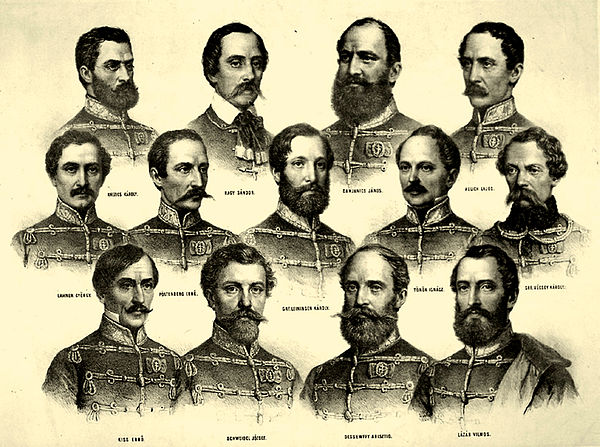The 13 martyrs – Arad
Fact of the Hungarian figure „Hungarian independence from the Habsburg dynasty„
Part of the „Revolutions of 1848″ topic
On October 6, 1849, in the fortress town of Arad, 13 generals of the Hungarian Honvéd Army were executed by hanging or firing squad. Their deaths marked the final act of retribution by the Habsburg Empire following the defeat of the Hungarian Revolution and War of Independence. These generals, often referred to as the „Martyrs of Arad,” became symbols of resistance, national unity, and the sacrifices made for Hungarian freedom. The executions were ordered by Julius Jacob von Haynau, the Austrian commander known for his brutal measures against the defeated revolutionaries.
The 13 generals executed in Arad on October 6, 1849, symbolize not only Hungary’s fight for independence but also the unity of diverse nationalities in a common cause. Their origins highlight the multicultural nature of the Hungarian revolutionary army: among them were Germans (Aulich Lajos, Láhner György, Schweidel József, Leiningen-Westerburg Károly), a Serb (Damjanich János), Armenians (Kiss Ernő, Lázár Vilmos), a Croat (Knezić Károly), an Austrian (Poeltenberg Ernő), and Hungarians. This diversity reflects the broader European struggle for liberty, transcending ethnic boundaries.
Their last words, etched in history, convey profound resolve and unwavering patriotism. For instance, Damjanich János, a Serb by birth, declared, „We defeated death because we were always ready to face it,” embodying the indomitable spirit of the revolutionaries. Leiningen-Westerburg Károly, of German origin, prophetically remarked, „The world will awaken when it sees the work of the executioners.” These statements epitomize the martyrs’ deep commitment to freedom and justice, regardless of their heritage.
The Martyrs of Arad hold a prominent place in Hungarian collective memory and national identity. October 6 was declared a national day of mourning, commemorating their sacrifice. The memory of their executions serves as a powerful reminder of the costs of freedom and the resilience of the Hungarian spirit. Monuments and memorials to the 13 generals exist throughout Hungary and neighboring countries, cementing their role in the shared history of the region. In Arad, the Liberty Statue stands as a testament to their enduring legacy, despite decades of political controversy, particularly during the communist era.
On the same fateful day as the executions in Arad, October 6, 1849, Count Lajos Batthyány, Hungary’s first prime minister, was executed in Budapest. Batthyány’s execution, carried out by a firing squad in the courtyard of the New Building (Újépület), symbolized the ultimate Habsburg response to Hungary’s fight for independence. Initially sentenced to hanging, Batthyány’s penalty was changed to a firing squad due to his earlier injuries inflicted during an assassination attempt in prison. His final words, „Long live my homeland, Hungary!” underscored his unyielding patriotism. Batthyány’s death further fueled national grief and resistance, marking him as one of Hungary’s greatest martyrs. His burial site in Kerepesi Cemetery and the eternal flame at his statue in Budapest stand as lasting memorials to his legacy.
The first modest tribute at the execution site was a dried mulberry tree, its 13 branches labeled with the names of the martyrs. By 1871, the Arad Honvéd Association replaced it with a commemorative stone. An obelisk was erected in 1881, initiated by Ernő Haeffner of the Győr 48 Honvéd Association. The site remains a symbol of reverence, with the precise execution location identified during archaeological work in 1932. In 1890, Arad saw the unveiling of a significant memorial monument, further solidifying the martyrs’ place in Hungarian collective memory.
October 6 became a national day of mourning in Hungary and Hungarian communities abroad in 2001, officially honoring the sacrifices of the 13 generals and their contributions to the fight for Hungarian independence. Numerous cities and towns have dedicated streets, squares, and parks in their memory. For instance, Budapest has Október 6. utca, while Kiskőrös, Petőfi Sándor’s birthplace, hosts the Vértanúk Fala Memorial, featuring bronze reliefs of the martyrs and Count Lajos Batthyány, the prime minister executed in Budapest.







